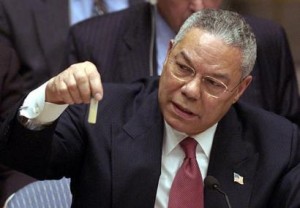John Kiriakou’s Prosecution Is an Important Precedent to CIA – Senate Intelligence Committee Spat
On several occasions, I have pointed to the arbitrary system our classification system constructs. It asks government employees to spy on their colleagues. It permits agencies to conduct fishing expeditions into personal information as part of the polygraph process. It permits Agencies to selectively approve propaganda under the guise of pre-publication review (most notably in the case of Jose Rodriguez and John Rizzo). By stripping sensitive unclassified jobs of their Merit Board protection, even lower level staffers who don’t receive a clearance-related income boost are now subject to this arbitrary system. And Congress even tried to use pensions as another leverage point against cleared personnel.
The arbitrary nature of this system is perhaps most clear, however, when it comes to prosecutions.
Which is a point John Kiriakou made in an op-ed yesterday. In it, he suggests Leon Panetta and James Cartwright could be sitting next to him in Loretto Prison.
The [Espionage Act] states: “Whoever, lawfully having possession of, access to, control over, or being entrusted with any … information relating to the national defense which information the possessor has reason to believe could be used to the injury of the United States or to the advantage of any foreign nation, willfully communicates … the same to any person not entitled to receive it … shall be fined under this title or imprisoned not more than 10 years, or both.”
A transcript obtained by the organization Judicial Watch shows that, at a CIA awards ceremony attended by Boal, Panetta did exactly that. The CIA seems to acknowledge that Panetta accidentally revealed the name of the special forces ground commander who led the operation to kill Osama bin Laden, not knowing that the Hollywood screenwriter was part of an audience cleared to hear him speak. But intent is not relevant to Espionage Act enforcement.
U.S. District Court Judge Leonie Brinkema ruled in my case that evidence of the accidental release of national defense information was inadmissible, and she added that the government did not have to prove that a leak of classified information actually caused any harm to the United States. In other words, the act of disclosing the kind of broad information covered by the Espionage Act is prosecutable regardless of outcome or motive.
The sensitivity of what Panetta revealed is not in question. The spokesman for the former CIA director said Panetta assumed that everyone present at the time of the speech had proper clearance for such a discussion. When the transcript of the speech was released, more than 90 lines had been redacted, implying that Panetta had disclosed a great deal more classified information than the name of an operative.
[snip]
If an intent to undermine U.S. national security or if identifiable harm to U.S. interests are indeed not relevant to Espionage Act enforcement, then the White House and the Justice Department should be in full froth. Panetta should be having his private life dug in to, sifted and seized as evidence, as happened to me and six others under the Obama administration.
[snip]
If Panetta and Cartwright aren’t accountable while Drake, Kim and I have been crucified for harming U.S. national security — all of us accused of or investigated for the same thing: disclosing classified information to parties not authorized to know it — then what does that say about justice in America or White House hypocrisy?
Kiriakou goes on to call for changes in the Espionage Act to focus on issues of intent and harm.
Kiriakou is, of course, correct that he got punished for things that Panetta and Cartwright have (so far, at least) escaped such levels of punishment for. (I’d also add the unnamed real sources for the UndieBomb 2.0 leak, who are being protected by the scapegoating of Donald Sachtleben.)
But I’d go even further. Given reports that FBI is investigating whether Senate Intelligence Committee staffers violated the law for obtaining proof the Agency they oversee was hiding evidence from it, it’s crucial to remember how Kiriakou’s prosecution came about, which I laid out in this post.
It started when CIA officers claimed that when Gitmo defense attorneys provided photos of their clients torturers to them–having independently discovered their identity–the torturers were put at risk. DOJ didn’t believe it was a security risk; CIA disagreed and went to John Brennan. And after Patrick Fitzgerald was brought in to mediate between DOJ and CIA, the prosecution of John Kiriakou resulted.
As a reminder of where this all started, it’s worth reading this March 15, 2010 Bill Gertz article which was, AFAIK, the first public report of the investigation into the John Adams Project. It describes a March 9, 2010 meeting between Fitzgerald and the CIA.
The dispute prompted a meeting Tuesday at CIA headquarters between U.S. Attorney Patrick J. Fitzgerald and senior CIA counterintelligence officials. It is the latest battle between the agency and the department over detainees and interrogations of terrorists.
[snip]
According to U.S. officials familiar with the issue, the current dispute involves Justice Department officials who support an effort led by the American Civil Liberties Union to provide legal aid to military lawyers for the Guantanamo inmates. CIA counterintelligence officials oppose the effort and say giving terrorists photographs of interrogators has exposed CIA personnel and their families to possible terrorist attacks.
[snip]
According to the officials, the dispute centered on discussions for a interagency memorandum that was to be used in briefing President Obama and senior administration officials on the photographs found in Cuba. Justice officials did not share the CIA’s security concerns about the risks posed to CIA interrogators and opposed language on the matter that was contained in the draft memorandum. The memo was being prepared for White House National Security Council aide John Brennan, who was to use it to brief the president.
The CIA insisted on keeping its language describing the case and wanted the memorandum sent forward in that form.
That meeting, of course, would have taken place the day after Fitzgerald was appointed. So immediately after Fitzgerald got put in charge of this investigation, he presumably moderated a fight between DOJ, which didn’t think detainee lawyers pursuing their clients’ torturers via independent means threatened to expose the torturers’ identity directly, and CIA, which apparently claimed to be worried.
What happened with Kiriakou’s sentencing today is many things. But it started as–and is still fundamentally a result of–an effort on the part of CIA to ensure that none of its torturers ever be held accountable for their acts, to ensure that the subjects of their torture never gain any legal foothold to hold them accountable.


